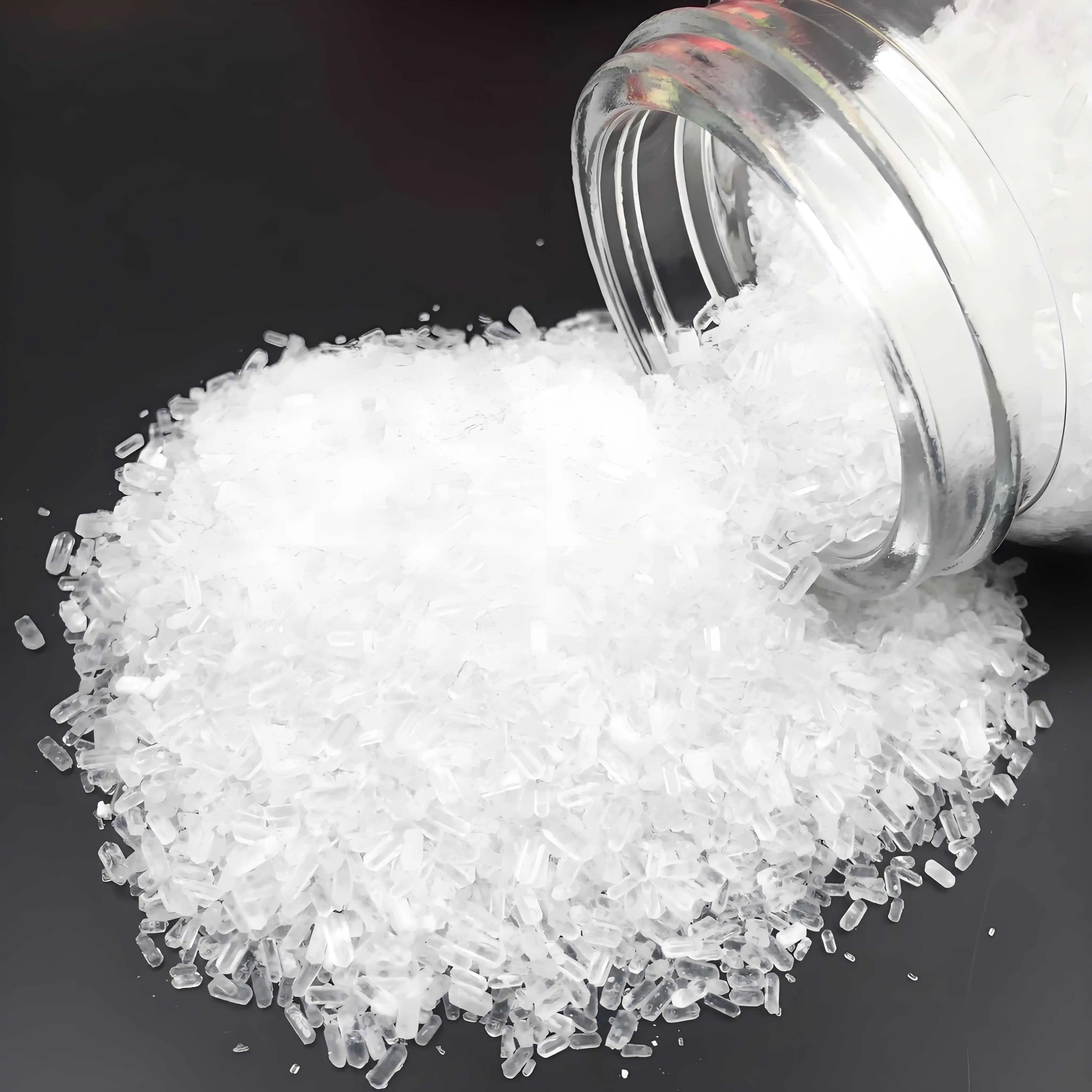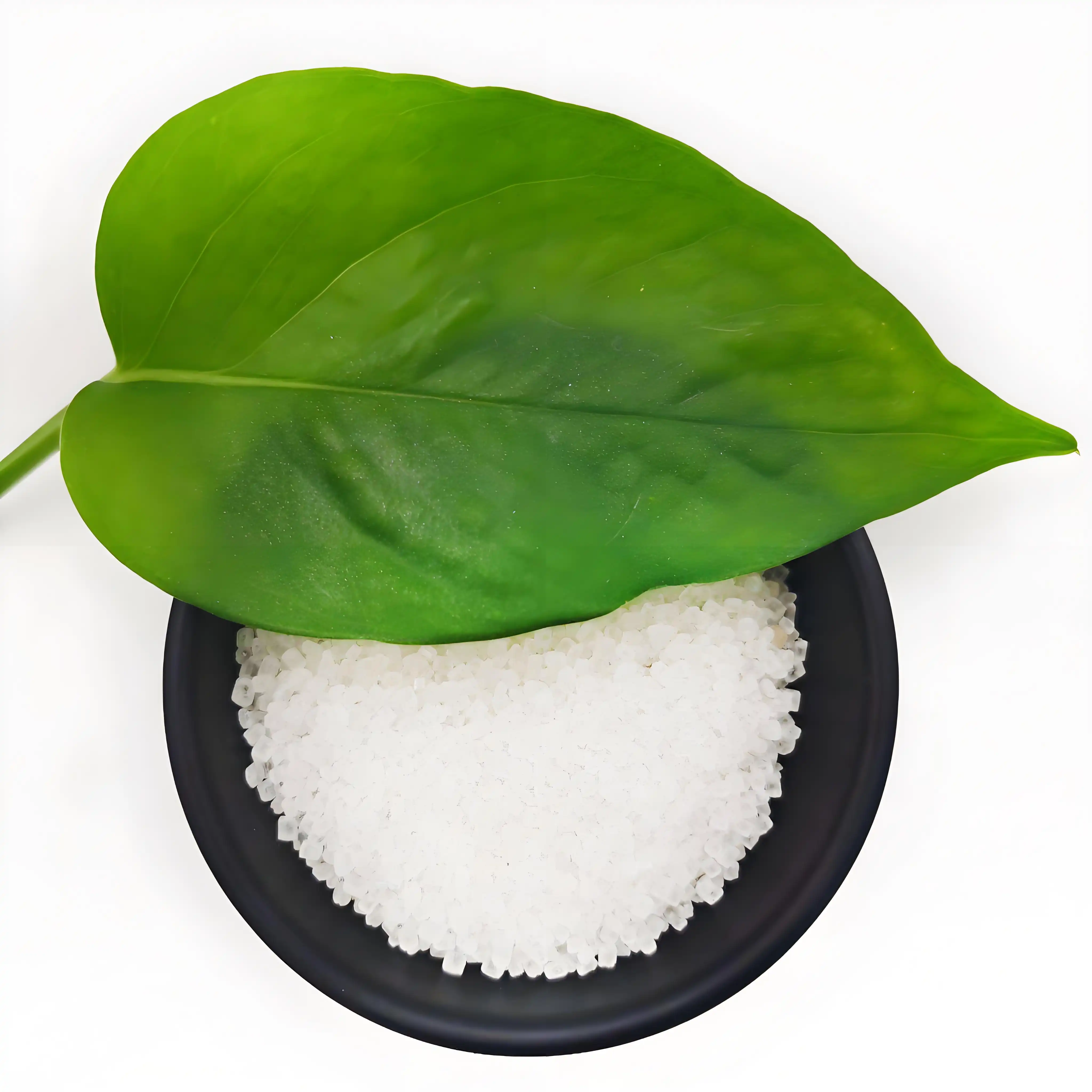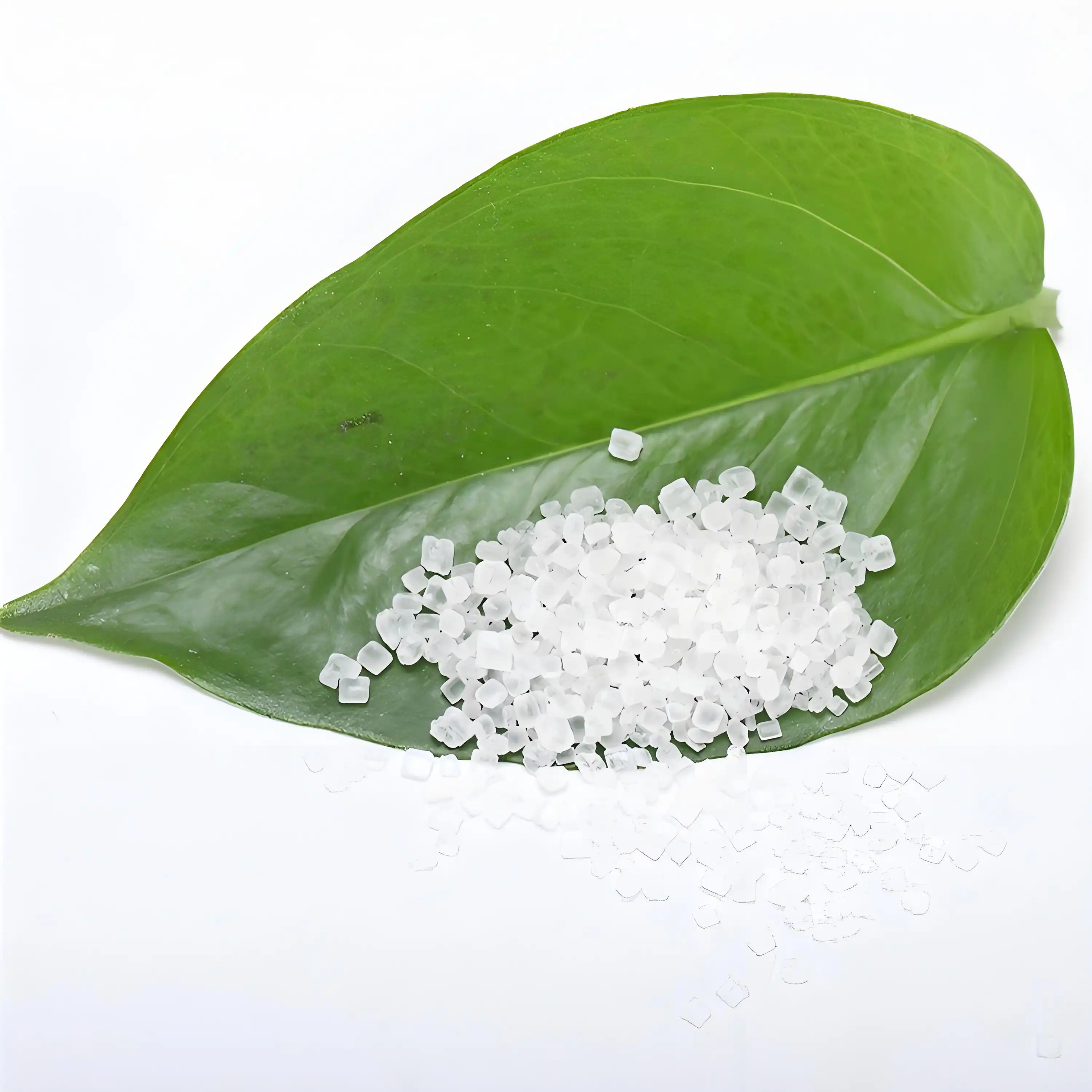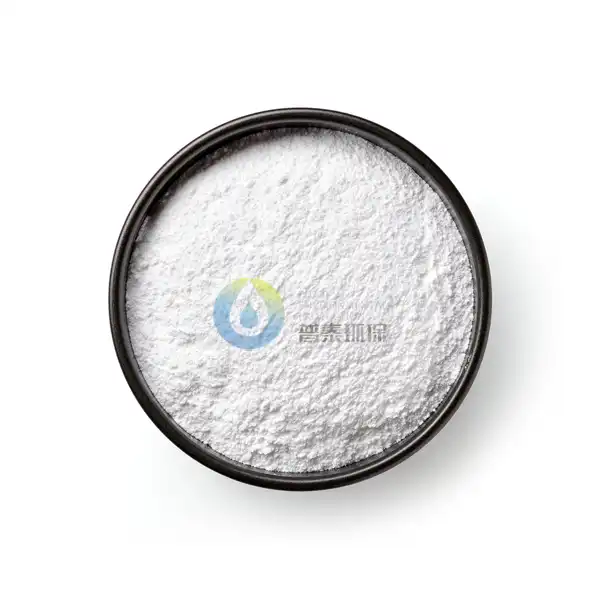How often should Organic Potassium Sulfate Fertilizer be applied to plants?
Organic Potassium Sulfate Fertilizer is an essential nutrient for plant growth and development. It plays a crucial role in various physiological processes, including photosynthesis, enzyme activation, and water regulation. However, many gardeners and farmers often wonder about the optimal frequency of applying this fertilizer to their plants. In this blog post, we'll explore the factors that influence the application frequency of Organic Potassium Sulfate Fertilizer and provide guidelines for different plant types and growing conditions.
What factors determine the application frequency of Organic Potassium Sulfate Fertilizer?
Soil Type and Nutrient Content
The frequency of applying Organic Potassium Sulfate Fertilizer largely depends on the soil type and its existing nutrient content. Sandy soils, for instance, tend to leach nutrients more quickly, requiring more frequent applications of the fertilizer. On the other hand, clay soils retain nutrients for longer periods, allowing for less frequent applications. Before determining the application schedule, it's crucial to conduct a soil test to assess the current potassium levels. This will help you avoid over-fertilization, which can lead to nutrient imbalances and potentially harm your plants. If your soil is already rich in potassium, you may need to apply Organic Potassium Sulfate Fertilizer less frequently or in smaller quantities.
Plant Growth Stage and Nutrient Requirements
The growth stage of your plants plays a significant role in determining how often you should apply Organic Potassium Sulfate Fertilizer. During the early stages of growth, plants generally require less potassium. However, as they enter their flowering and fruiting stages, their potassium needs increase substantially. For example, vegetables like tomatoes and peppers benefit from more frequent applications of Organic Potassium Sulfate Fertilizer during fruit development. Similarly, flowering plants may require additional potassium during bud formation and blooming. It's essential to understand the specific nutrient requirements of your plants at different growth stages to optimize the application frequency of the fertilizer.
Environmental Conditions and Watering Practices
Environmental factors and watering practices also influence how often you should apply Organic Potassium Sulfate Fertilizer. In regions with high rainfall or if you practice frequent watering, nutrients may be washed away more quickly, necessitating more frequent fertilizer applications. Conversely, in drier climates or with controlled irrigation systems, nutrients tend to remain in the soil longer, allowing for less frequent applications. Additionally, temperature and light conditions affect plant metabolism and nutrient uptake. During periods of rapid growth, such as warm and sunny weather, plants may require more frequent applications of Organic Potassium Sulfate Fertilizer to support their increased nutrient demands.
How does the type of plant affect the application frequency of Organic Potassium Sulfate Fertilizer?
Annual vs. Perennial Plants
The application frequency of Organic Potassium Sulfate Fertilizer varies between annual and perennial plants. Annual plants, which complete their life cycle in one growing season, generally require more frequent applications of the fertilizer. This is because they have a shorter time frame to absorb nutrients and produce flowers or fruits. For annuals, you may need to apply Organic Potassium Sulfate Fertilizer every 4-6 weeks during the growing season. Perennial plants, on the other hand, have established root systems and can access nutrients from a larger soil volume. They typically require less frequent applications, often benefiting from 2-3 applications per year, with one application in early spring and another in mid-summer.
Fruiting vs. Leafy Plants
The nutrient requirements and, consequently, the application frequency of Organic Potassium Sulfate Fertilizer differ between fruiting and leafy plants. Fruiting plants, such as tomatoes, peppers, and squash, have higher potassium demands, especially during fruit development. For these plants, you may need to apply the fertilizer more frequently, typically every 3-4 weeks during the fruiting period. Leafy plants, like lettuce and spinach, generally require less potassium and can be fertilized less frequently, usually every 6-8 weeks. However, it's important to note that over-application of potassium can lead to nutrient imbalances in leafy plants, potentially affecting their growth and quality.
Container Plants vs. In-Ground Plants
The growing environment of plants also impacts the application frequency of Organic Potassium Sulfate Fertilizer. Container plants typically require more frequent fertilization compared to in-ground plants. This is because the limited soil volume in containers can lead to faster depletion of nutrients. For container plants, you may need to apply Organic Potassium Sulfate Fertilizer every 2-3 weeks during the growing season. In-ground plants, with access to a larger soil volume, can often be fertilized less frequently, typically every 4-6 weeks. However, it's crucial to monitor the plants' growth and adjust the fertilization schedule accordingly, as factors such as soil type and plant size can influence nutrient availability and uptake.
What are the best practices for applying Organic Potassium Sulfate Fertilizer?
Proper Timing and Application Methods
When it comes to applying Organic Potassium Sulfate Fertilizer, timing and method are crucial for optimal results. The best time to apply the fertilizer is typically in the early morning or late afternoon when temperatures are cooler, reducing the risk of leaf burn. Avoid applying the fertilizer during the hottest part of the day or when plants are under water stress. As for the application method, you can either broadcast the fertilizer evenly around the plant's drip line or incorporate it into the soil before planting. For established plants, side-dressing is an effective method, where you apply the fertilizer in a band around the plant, about 6 inches away from the stem. Always water thoroughly after application to help distribute the nutrients and prevent root burn.
Dosage and Concentration Considerations
Determining the right dosage and concentration of Organic Potassium Sulfate Fertilizer is essential for plant health and optimal growth. Over-application can lead to nutrient imbalances, salt buildup in the soil, and potential plant damage. As a general rule, it's better to apply smaller amounts more frequently rather than large amounts less often. This approach helps maintain a steady supply of nutrients and reduces the risk of fertilizer burn. Always follow the manufacturer's recommendations for application rates, and consider factors such as plant size, growth stage, and soil conditions. For sensitive plants or seedlings, you may want to dilute the fertilizer to half-strength to prevent potential damage.
Integrating with Overall Fertilization Plan
Organic Potassium Sulfate Fertilizer should be integrated into a comprehensive fertilization plan that addresses all essential plant nutrients. While potassium is crucial for plant growth, it's important to maintain a balance with other macronutrients like nitrogen and phosphorus, as well as micronutrients. Consider using a complete organic fertilizer that includes potassium sulfate as part of its formulation, or supplement with other organic sources of nutrients as needed. Rotate the use of Organic Potassium Sulfate Fertilizer with other fertilizers to ensure a well-rounded nutrient profile for your plants. Additionally, incorporate organic matter such as compost into your soil regularly, as this can help improve nutrient retention and overall soil health, potentially reducing the frequency of fertilizer applications.
Conclusion
The frequency of applying Organic Potassium Sulfate Fertilizer to plants depends on various factors, including soil type, plant growth stage, environmental conditions, and plant type. Generally, most plants benefit from applications every 4-6 weeks during the growing season, with adjustments made based on specific needs. Container plants and heavy feeders may require more frequent applications, while established perennials may need less. Always consider the overall nutrient balance, follow proper application techniques, and integrate the fertilizer into a comprehensive plant care regimen. By understanding these factors and best practices, you can optimize the use of Organic Potassium Sulfate Fertilizer to promote healthy, vigorous plant growth in your garden or agricultural setting.
Xi'an Putai Environmental Protection Co., Ltd. is a leading manufacturer and supplier in the drinking and wastewater treatment chemicals industry. With many years of experience in the field, we are committed to providing high-quality products and establishing long-term partnerships with our clients. Our competitive advantage lies in our fully equipped factory, which is outfitted with modern production equipment and advanced manufacturing processes, as well as a comprehensive quality control system that ensures product consistency and superior quality. Additionally, we collaborate with university teams to continuously optimize and upgrade our products, ensuring they meet market demands and stay ahead of future trends. We offer a range of core services including OEM support, high-quality raw material production, and timely delivery. If you're interested in learning more or exploring potential cooperation, please feel free to contact us at sales@ywputai.com. We look forward to the opportunity to work with you.
References
1. Smith, J. (2021). Organic Fertilizers: A Comprehensive Guide to Potassium Sulfate. Journal of Sustainable Agriculture, 45(3), 201-215.
2. Johnson, A., & Brown, L. (2020). Optimizing Nutrient Management in Organic Farming Systems. Soil Science Society of America Journal, 84(2), 456-470.
3. Garcia, M. et al. (2019). Effects of Potassium Sulfate Application on Yield and Quality of Vegetable Crops. HortScience, 54(9), 1561-1568.
4. Wilson, R. (2022). Soil Fertility Management for Organic Crop Production. Organic Farming Research Foundation.
5. Thompson, H., & Davis, K. (2018). Potassium in Plant Nutrition: From Soil to Harvest. Plant Physiology Today, 9(4), 78-92.
6. Lee, S. et al. (2020). Comparative Study of Organic and Conventional Potassium Fertilizers on Crop Yield and Soil Health. Agronomy Journal, 112(5), 3890-3905.
RECOMMENDATIONS
 VIEW MOREWholesale Ammonium Sulfate Fertilizer 21-0-0
VIEW MOREWholesale Ammonium Sulfate Fertilizer 21-0-0 VIEW MOREHigh Purity Ammonium Sulfate Fertilizer
VIEW MOREHigh Purity Ammonium Sulfate Fertilizer VIEW MORECaprolactam-Grade Ammonium Sulfate Fertilizer
VIEW MORECaprolactam-Grade Ammonium Sulfate Fertilizer_1729216561998.webp) VIEW MORESop Water Soluble Fertilizer
VIEW MORESop Water Soluble Fertilizer_1729216311056.webp) VIEW MOREPotassium Magnesium Sulfate Fertilizer
VIEW MOREPotassium Magnesium Sulfate Fertilizer_1729215837243.webp) VIEW MOREPotassium Sulfate Organic Fertilizer
VIEW MOREPotassium Sulfate Organic Fertilizer_1729215772183.webp) VIEW MOREPotassium Sulfate Fertilizer 0-0-53
VIEW MOREPotassium Sulfate Fertilizer 0-0-53 VIEW MOREOrganic Potassium Sulfate Fertilizer
VIEW MOREOrganic Potassium Sulfate Fertilizer_1729233544024.webp) VIEW MORESolid Potassium Sulfate Fertilizer
VIEW MORESolid Potassium Sulfate Fertilizer_1729215651315.webp) VIEW MOREFertilizer Potassium Sulfate
VIEW MOREFertilizer Potassium Sulfate_1729215530587.webp) VIEW MORESop Fertilizer
VIEW MORESop Fertilizer

